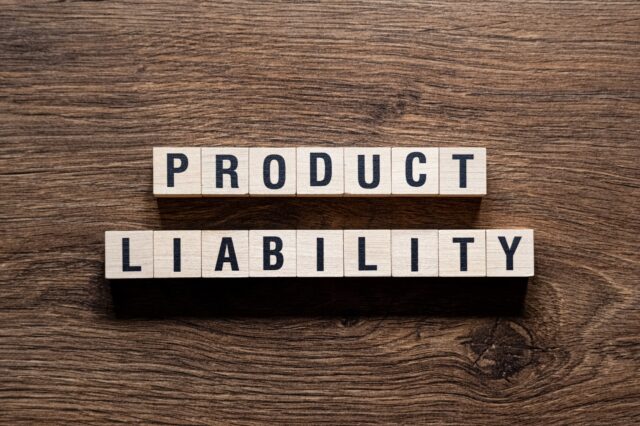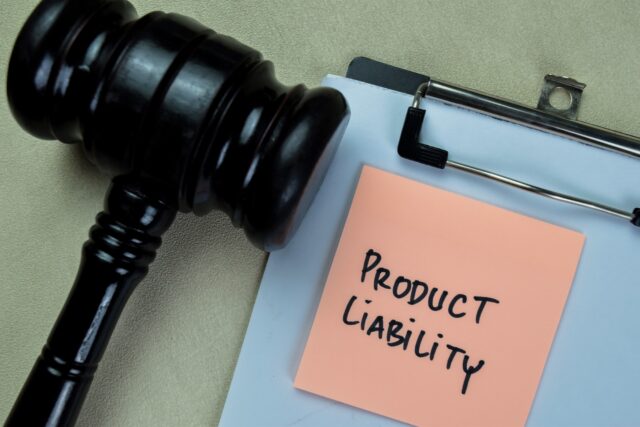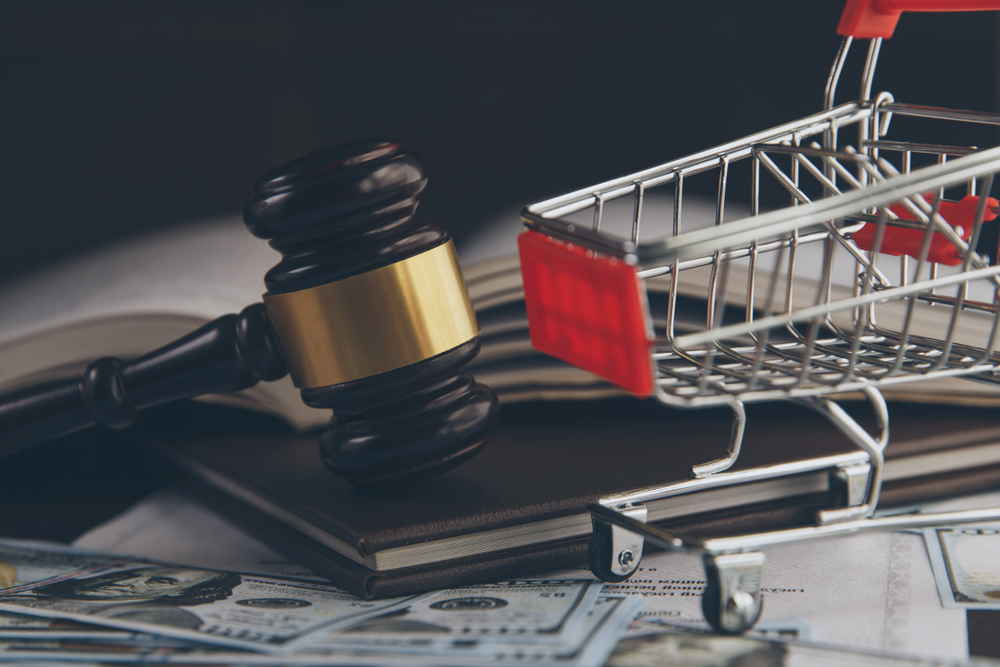The law holds corporations liable when a product is defective or otherwise unsafe, causing consumers injuries. Injury victims can seek compensation for their losses, though the legal process can be difficult, especially when going up against major manufacturers.
Filing a defective product claim involves a few steps to ensure your complaint is handled properly and that you seek full compensation for any harm or loss caused by the defective product. Below is a brief overview of the legal process, which you should never try to handle alone.
If you have suffered an injury or a loved one has died due to a defective product, you need a lawyer to identify and explain your rights. Contact an Arkansas product liability lawyer immediately to learn more about what to do to file a defective product claim properly.
Steps To Filing a Defective Product Claim
Filing a defective product claim involves documenting the issue, contacting the parties responsible, and understanding your legal rights. If you are unsatisfied with the resolution, you can consider legal action, such as sending a demand letter or filing a lawsuit. Consulting a product liability attorney is essential if you are seeking compensation for injuries or significant financial losses due to the defect.
Document the Defect and Your Injury
You will want to document the injury to ensure that you can pinpoint when and why you suffered an injury. Carefully examine the product for any defects or damages. Take clear pictures that show the defect and any damage it caused.
Retain proof of purchase, like your sales receipt, as this evidence can establish that you purchased the product and prove the incident’s timeline.
Write a detailed account of the incident, including when, where, and how the defect caused harm or injury. Include your medical treatment details if any injury was involved.
Contact the Seller or Manufacturer
After a defective product accident, you might consider contacting the seller or manufacturer. Contact the manufacturer if the product came directly from a manufacturer or the retailer does not offer a resolution. Use the contact information on the product packaging or the manufacturer’s website.
When contacting the manufacturer or retailer, put your complaint in writing. Make sure to include:
- A request for a refund, replacement, or compensation
- Any supporting videos or photos
- Proof of purchase
- A description of the defect and the harm it caused
Contact the retailer or store where you bought the product. Provide them with details about the defect and your experience. Many retailers offer refunds, exchanges, or replacements for defective products.
Review the Product Warranty or Return Policy
Check to see if there is an applicable product warranty or return policy. If the defect was noticed shortly after the purchase, check the store’s return or exchange policy to see if you can get a refund or replacement.
Understand the Legal Grounds for Your Claim
You might have the right to sue for compensation after being injured by a defective product. A product liability attorney can explain your right to recover for the losses you have sustained due to getting hurt by the defective product.
Send a Demand Letter
One of the first steps toward legal compensation might be sending a demand letter. Send a formal demand letter if the seller or manufacturer does not resolve the issue. In the letter, a product liability lawyer will assert your rights. A demand letter might include:
- A reasonable timeline for the seller or manufacturer to respond or resolve the issue
- Your request for a refund, replacement, or compensation, what actions you have already taken
- The defect and how it harmed you
Keep Records of All Correspondence
You should keep all correspondence records during this process and share them with your product liability attorney. Throughout the process, keep detailed records of all communications with the seller, manufacturer, or lawyer. Important correspondence can include phone call logs, receipts, emails, and letters.
Consider Legal Action
You might need to pursue legal action to resolve your case. If the defect caused significant harm, injury, or financial loss, you may want to consult a product liability lawyer. They can advise you on your legal options and pursue a case.
Report the Defective Product (Optional)
You may choose to report the defective product, but this is optional. If the product poses a risk to other consumers, you can report it to government agencies or consumer safety organizations. You might choose to report the product to the Consumer Product Safety Commission or the Better Business Bureau.
Types of Defective Products

An injury can come from many types of defective products. Defective products can fall into several categories, depending on the nature of the defect and the type of product involved. The three main defects that can lead to product liability claims are design defects, manufacturing defects, and marketing defects. Here is a breakdown of various types of defective products:
Defective Software and Technology Products
Defects in software or gadgets can lead to significant issues. Software that contains bugs or security vulnerabilities leads to data loss, system crashes, or privacy breaches. Devices like smartphones, tablets, or computers with faulty hardware like brittle screens that easily crack.
Household Chemicals
Defective household chemicals or cleaning products can be harmful to users and the environment. Cleaning products with harmful ingredients that cause chemical burns or respiratory issues when used. Pesticides that fail to function as intended or cause harmful exposure, leading to poisoning or injury.
Sports and Exercise Equipment
Defective equipment used in sports or exercise can cause injuries during physical activity. Treadmills, ellipticals, or stationary bikes with malfunctioning parts leading to falls or injury. Defective helmets, knee pads, or other protective equipment that do not provide proper safety during contact sports. Dumbbells, barbells, or exercise bands that break or malfunction during use, leading to injury.
Defective Clothing and Footwear
Clothing and shoes are essential products that, when defective, can lead to injury or discomfort. Clothing with harmful chemicals, like formaldehyde or lead, or garments with poorly secured zippers or buttons that cause injury. Shoes with poorly attached soles, inadequate support, or defects that lead to falls or foot injuries.
Personal Care Products
Personal care and cosmetic products can also be defective, leading to skin or health issues. Defective products like cosmetics can have harmful chemicals or allergens that are not disclosed on the label. Products like shampoos or hair dye can cause chemical burns and allergic reactions because of unsafe ingredients. Razors with broken or malfunctioning parts that cause cuts or injury during use may be the basis of a defective product claim.
Industrial and Agricultural Products
Industrial and agricultural products used in work environments or agriculture may cause significant harm if defective. Defective safety gear can lead to injury in hazardous environments. Defective farm equipment, like tractors, harvesters, or pesticides, that cause injury or property damage. Power tools, heavy machinery, or equipment with design flaws or manufacturing defects lead to malfunction or safety hazards.
Food and Beverages
Defective food and beverage products can cause severe health risks. Food products contaminated with bacteria can lead to food poisoning or injury. Mislabeled products can lead to allergic reactions or poisoning. Packaging that fails to protect the food contamination or causes it to spill, leading to potential health hazards.
Medical Devices
Malfunctioning medical products can result in serious harm or complications.
Automotive Products
Defective automotive products can lead to significant injuries or even fatalities. Tires prone to blowouts or lack adequate tread, for example, can lead to traffic accidents.
Consumer Goods
Consumer goods are everyday products that most people use, including toys, appliances, and electronics. Examples of defective consumer products can include defective batteries, overhearing devices, and malfunctioning electrical wiring.
Consumer goods like toys can cause a serious choking hazard, and paint can lead to poisoning. Defective furniture or airbags can cause bruises and head injuries.
Common Injuries In Defective Products Claims
Defective products can cause a wide range of injuries, depending on the type of product, how it malfunctions, and how it impacts the user. Here are some common injuries associated with defective product claims:
Burns from Overheating

Defective products can easily cause burn injuries. Malfunctioning electronics, like phones, laptops, or space heaters, can overheat and cause burns or scalding injuries if the product becomes too hot to touch. Faulty gas lines or defective heating products, like grills or stoves, can cause burns or explosions.
Asphyxiation or Choking
Small parts in children’s toys and other baby products can break off and pose a choking hazard. Defective designs or poor manufacturing can also increase the risk of choking. Products with unsafe or defective packaging can lead to accidental suffocation or choking hazards.
Soft Tissue Injuries
Soft tissue injuries are not usually permanent or severe but are still compensable. Defective products that cause falls or physical impact can lead to sprains, strains, or bruises in areas like the ankle, wrists, or knees. Defective parts like airbags or seat belts can cause soft tissue injuries like whiplash in car accidents.
Internal Injuries
In the event of a car accident, a defective seatbelt or airbag may fail to protect you, leading to internal injuries like organ damage, lacerations, or internal bleeding. Malfunctioning medical devices, such as pacemakers, implants, or surgical tools, can cause internal injuries or require corrective surgery.
Eye Injuries
Faulty safety glasses, goggles, or contact lenses can lead to eye injuries, including scratches, burns, or permanent blindness. Defective batteries in products like smartphones or electronic devices can leak, explode, or catch fire, potentially leading to eye injuries from flying debris.
Allergic Reactions
Defective skin care products with defective formulations or harmful ingredients can trigger severe allergic reactions, including rashes, swelling, and anaphylaxis. Defective toys or children’s products containing hazardous materials, like lead paint, can cause toxic exposure or allergic reactions.
Chemical Injuries and Poisoning
Food or drink products with defective packaging or contamination can lead to food poisoning, allergic reactions, or other serious health issues. Defective household cleaning products, pesticides, or even cosmetics containing harmful chemicals can cause chemical burns or poisoning if they are not properly labeled or safety mechanisms fail.
Spinal Injuries
Any defective product causing a fall, such as a defective ladder or escalator, can lead to spinal fractures or dislocations. Faulty furniture that collapses or a defective mattress that fails to support the body can lead to spinal cord injuries or chronic back pain.
Broken Bones and Fractures
Equipment like treadmills, elliptical machines, or weightlifting devices may cause falls or crush injuries, leading to fractures and broken bones. Other products, like faulty brakes, can lead to serious fractures. Poorly designed or manufactured furniture can collapse and lead to broken bones or fractures.
Head Injuries
Helmets or protective gear that fail to meet safety standards may lead to head trauma in accidents involving sports, cycling, or work-related injuries. Badly made furniture can lead to concussions, traumatic brain injuries, or skull fractures.
Cuts, Lacerations, and Amputations
In severe cases, defective products can lead to cuts, lacerations, and even amputations. Relatively safe products, like razor blades used for grooming, can cause severe cuts or lacerations. Malfunctioning machinery or power tools, like saws or lawnmowers, may cause amputations or severe cuts.
Burns and Fires
Bad wiring or malfunctioning electrical components in products like appliances, phones, or space heaters can lead to burns or cause fires. Defective cooking equipment, gas appliances, or even faulty fireworks can lead to explosions or chemical burns.
No matter the type of injury that you suffered from a defective product, having an attorney can increase the possibility of getting the full and fair financial compensation you deserve after an accident. If you or a loved one has suffered an injury due to a defective product, contact an attorney to learn your legal options after an injury.
Contact a Product Liability Accident Attorney Today

There is no need for you to face the aftermath of an injury caused by a defective product alone. Take advantage of the skill and experience of a qualified product liability lawyer to get the best outcome available in your case. Do not delay. Contact an Arkansas personal injury lawyer now for a free consultation.

